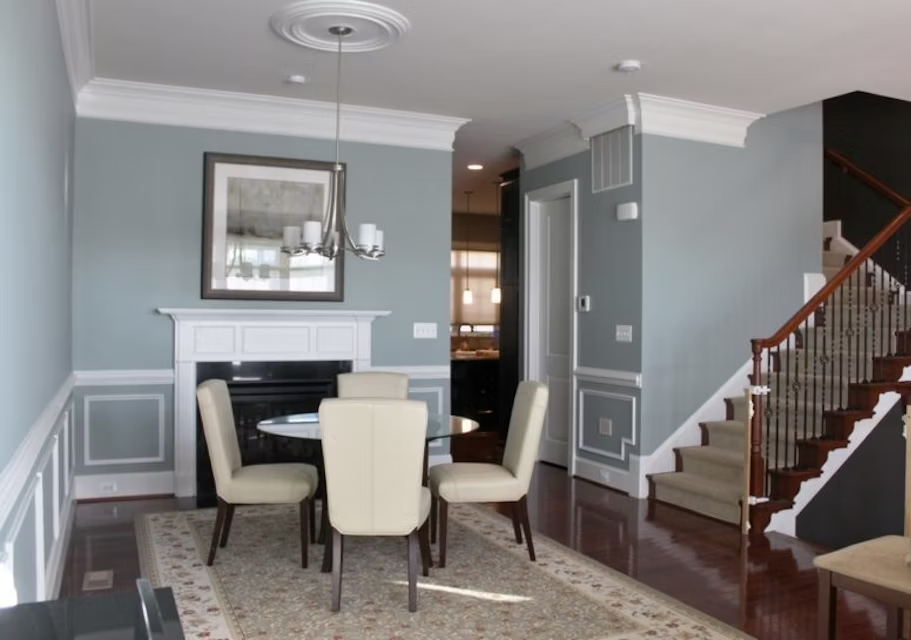Preparing walls properly before painting is essential for achieving a smooth, professional finish that lasts. Here’s a step-by-step guide to help you prepare walls for Interior Painting:
- Clear the Room: Start by removing as much furniture and decor from the room as possible. Cover any remaining furniture and fixtures with plastic sheets or drop cloths to protect them from dust and paint splatters.
- Gather Your Tools: Gather all the necessary tools and materials for wall preparation, including:
- Spackle or joint compound
- Putty knife or drywall knife
- Sandpaper (medium and fine grit)
- Tack cloth or damp sponge
- Painter’s tape
- Primer (if needed)
- Cleaning supplies (e.g., mild detergent, sponge, bucket)
- Inspect the Walls: Carefully inspect the walls for any imperfections such as cracks, holes, or dents. Use spackle or joint compound to fill in these imperfections. Apply the spackle or compound using a putty knife, and then smooth it out evenly. Allow the filler to dry completely according to the manufacturer’s instructions.
- Sand the Walls: Once the spackle or joint compound is dry, use medium-grit sandpaper to smooth out the patched areas and any rough spots on the walls. Sand in circular motions until the surface is smooth to the touch. Wipe away dust with a tack cloth or a damp sponge.
- Clean the Walls: Clean the walls thoroughly to remove dust, dirt, and grease. Use a mild detergent solution and a sponge or cloth to wash the walls from top to bottom. Pay extra attention to areas near doors, windows, and baseboards where dust and grime tend to accumulate.
- Repair Wall Damage: If you encounter more significant wall damage, such as large holes or water damage, consider consulting a professional or hiring a contractor for repairs. Serious structural issues may require more extensive interventions.
- Protect Surfaces with Painter’s Tape: Use painter’s tape to protect trim, baseboards, doorframes, and any other areas you don’t want to paint. Apply the tape carefully and press it firmly to ensure clean lines and prevent paint bleed.
- Apply Primer (if needed): Depending on the condition of the walls and the type of paint you’ll be using, applying a coat of primer may be necessary. Primer helps paint adhere better, improves coverage, and can even out the surface texture. Allow the primer to dry completely before proceeding to paint.
- Inspect and Touch Up: After completing all the preparation steps, inspect the walls one final time. Look for any missed imperfections, rough spots, or areas that may need additional sanding or cleaning. Make any necessary touch-ups before proceeding with painting.
By following these step-by-step instructions, you’ll ensure that your walls are properly prepared for interior painting. Taking the time to prepare surfaces correctly will result in a more professional-looking finish and enhance the longevity of your paint job. Remember, thorough preparation is key to achieving outstanding results and transforming your living space.



